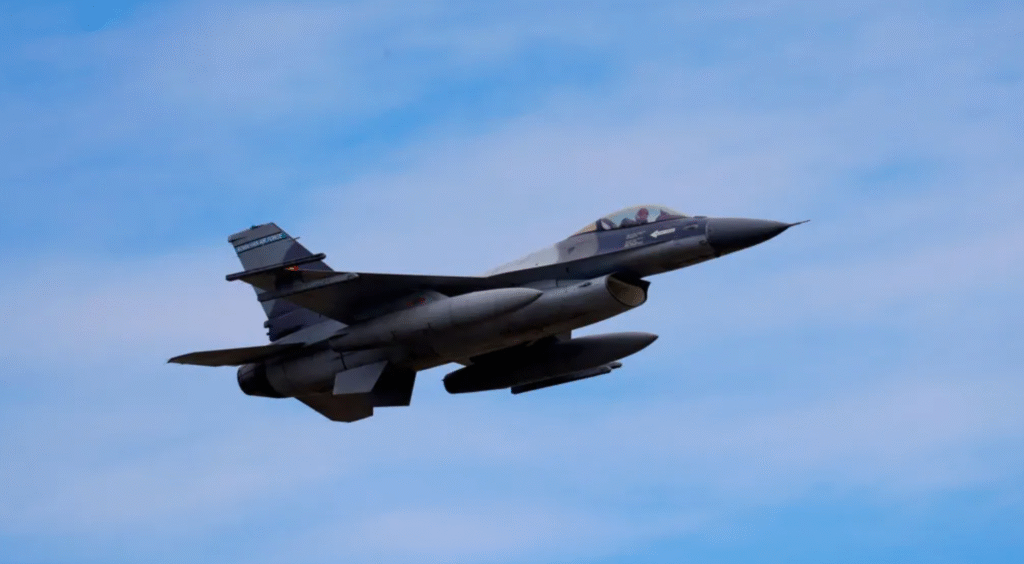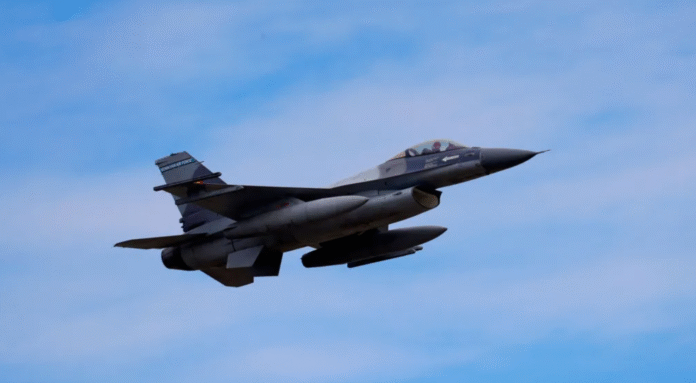Russian Drone Romania: A NATO Concern Grows
The phrase Russian drone Romania has quickly become a symbol of rising tensions in Eastern Europe. On Saturday, Romanian officials confirmed that a Russian drone breached their airspace during an attack on Ukraine’s southern border, making Romania the second NATO country in just one week to report such an incident.
This alarming development has raised serious concerns across the alliance, drawing strong reactions from Western leaders and highlighting how the war in Ukraine increasingly risks spilling over into neighboring countries.
Russian Drone Romania: What Exactly Happened?
According to Romania’s Defense Ministry, two F-16 fighter jets were deployed to monitor Russian airstrikes targeting Ukrainian infrastructure along the Danube River. It was during this mission that the Russian drone Romania radar detection occurred, approximately 20 kilometers southwest of the village of Chilia Veche.
While the ministry clarified that the drone did not pass over populated areas and posed no immediate danger, the symbolism of the incursion cannot be overlooked. Romanian officials stressed that such actions represent a blatant violation of national sovereignty.
Russian Drone Romania: Zelensky Sounds the Alarm
Ukrainian President Volodymyr Zelensky reacted strongly, calling the breach “an obvious expansion of the war by Russia.” According to Zelensky, the Russian military knows exactly where its drones are heading and how long they can remain airborne.
He urged Western nations to respond with tougher sanctions on Moscow and reinforced his long-standing appeal for increased defensive aid.
Russian Drone Romania: Poland Reports Similar Attacks
Romania is not alone. Just days earlier, Poland announced it had shot down at least three Russian drones that crossed into its territory. Polish Prime Minister Donald Tusk said his country had raised its air defense readiness to the highest level, with both Polish and allied forces carrying out preventative air operations.
The Polish response underscores NATO’s commitment to protecting its eastern flank. Yet it also highlights the growing unpredictability of Russia’s drone campaigns near alliance borders.
Russian Drone Romania: NATO’s Broader Response
Romania’s drone incident has triggered wider regional consequences.
-
EU Reaction: EU foreign policy chief Kaja Kallas labeled the incursion “yet another unacceptable breach of an EU member state’s sovereignty.”
-
Czech Republic’s Move: Prague announced it was sending a special operations helicopter unit to Poland to bolster defenses. The unit includes three Mi-171S helicopters capable of transporting up to 24 personnel each.
-
Belarus Claim: Belarus, Russia’s close ally, suggested the Polish drone incident was accidental, caused by navigation jamming.
Despite these explanations, NATO allies remain skeptical, with most viewing the repeated incidents as deliberate provocations.

Russian Drone Romania: The U.S. Stance
U.S. President Donald Trump also addressed the matter, signaling readiness to impose stricter sanctions on Russia. However, he tied this to conditions, insisting that NATO countries must reduce their dependence on Russian oil before Washington escalates economic measures.
Trump’s statement reflects a balancing act, supporting NATO allies while also pressuring them to adjust their energy policies.
Russian Drone Romania: Why This Matters
The Russian drone Romania incident is not just another border violation. It raises crucial questions:
-
Sovereignty at Risk: Repeated drone incursions test NATO’s resolve to defend member states’ borders.
-
Escalation Potential: Even unintentional violations can spiral into larger conflicts if misinterpreted.
-
Military Readiness: NATO forces are being forced into a heightened state of alert, draining resources and creating constant tension.
-
Civilian Safety: While this particular drone did not endanger Romanian civilians, the possibility of future accidents cannot be ruled out.
-
Regional Stability: Countries like Poland, Romania, and the Czech Republic are directly exposed to the consequences of Russia’s aggression.
Russian Drone Romania: Historical Context
Since Russia launched its full-scale invasion of Ukraine in February 2022, the war has spilled into neighboring territories multiple times. NATO has long feared such incidents could trigger Article 5, the alliance’s mutual defense clause.
While NATO leaders have been careful not to overreact, the Russian drone Romania incursion shows just how thin the line is between containment and escalation.
Russian Drone Romania: Expert Opinions
Defense analysts believe drone warfare is Russia’s attempt to stretch NATO’s defenses and test political will. By flying drones close to or into NATO airspace, Moscow may be gauging reaction times and readiness levels.
Dr. Andi Hoxhaj, a specialist in European security, notes: “These drone incursions serve both a military and psychological purpose. They keep NATO states constantly on edge while giving Russia plausible deniability.”
Russian Drone Romania: What Happens Next?
Romania has already lodged a formal complaint and is coordinating with NATO partners. The alliance is expected to strengthen air patrols along its eastern borders and possibly deploy more assets in Romania and Poland.
Meanwhile, Ukrainian officials warn that unless Russia faces harsher consequences, such violations will only increase in frequency and severity.
Conclusion: Russian Drone Romania and NATO’s Future
The Russian drone Romania episode is a stark reminder of how fragile the security situation in Eastern Europe has become. With Poland, Romania, and now other NATO allies directly impacted, the question is not whether the war will escalate further, but how quickly leaders can act to prevent it.
For NATO, this is no longer a distant conflict. It’s at their doorstep, buzzing in the skies, testing their defenses, and threatening the stability of the entire region.

